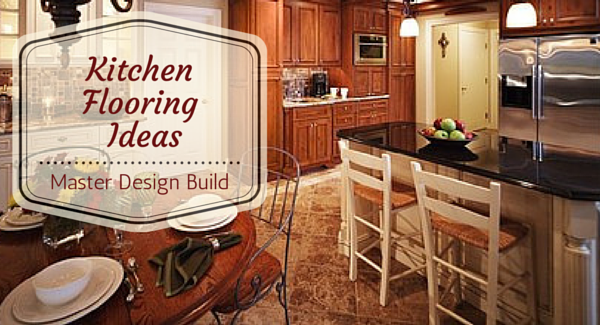Choosing the right floor for your kitchen is an important design choice, as it will dramatically affect the look and feel of your kitchen. The material you choose for your kitchen floor has to be durable and resilient, and easy to clean as well.
There are plenty of materials to choose from, each with their own distinct advantages and disadvantages. With a bit of forethought you can find the perfect floor to suit your kitchen needs.
Ceramic Tile Kitchen Flooring
Ceramic tiles are commonly found in kitchens because they’re versatile and have a relatively low cost. The shapes, colors, and sizes are endless, so it’s easy to find a style and pattern to you like. They’re easy to clean and are stain resistant.
However, ceramic tiles can be fragile, with cracks appearing as the tiles settle or when something is dropped on them. They also tend to be cold and hard, making prolonged periods in the kitchen uncomfortable, and they require regular maintenance as well.
Natural Stone Kitchen Flooring
Natural stone floors have the same advantages as ceramic tiles, in that they’re easy to clean. Since no stone is the same, they’re a great design choice for an upscale, yet rustic, kitchen. They’re much more resistant to cracking than ceramic tiles but still feel cold and hard underfoot. Porous stones will also need resealing to prevent them from absorbing moisture and staining.
Natural Wood Kitchen Flooring
Wood comes in a plethora of colors and shapes and provides a warm, cosy feel. Wood flooring has a timeless charm that is unlikely to go out of style, and properly cared-for wood floors get better with age. Most wood floors are grown in sustainable forests, so it’s a great eco-friendly choice. However, wood does require care, especially in areas of high foot traffic, and will require periodic re-sanding and varnishing.
Cork Kitchen Flooring
Some people dislike the appearance of cork flooring, as it looks quite rough and textured. However, it’s one of the most sustainable materials available and possesses a great deal of rustic charm. It’s very soft underfoot and is very resilient and flexible.
Small scars will heal over time, and it also has the benefit of absorbing sound. However, it does require a considerable amount of care including regular cleaning to prevent dirt and grit scars.
Vinyl Kitchen Flooring
Previously looked down upon as a cheap and cheerful alternative to more refined choices of flooring, vinyl has come a long way. The sheer variety of designs and finishes of vinyl makes a great choice regardless of the style of your kitchen. It can mimic stone, wood, ceramic tiles and more, and is much easier to clean and maintain.
It’s very easy to install and is softer underfoot than ceramic or stone tiles. However, it can dent and curl over time and begins to show wear within 5 years of installation or even sooner if exposed to sunlight on a regular basis.
Your choice of flooring material depends on a number of factors, including cost, and the style of your kitchen. There are plenty of flooring options, each with their own set of requirements, and with such a large variety of materials to choose from, it’s easy to find the perfect floor for your needs.
Our team at Master’s Design Build Group is happy to help you with your kitchen flooring needs, and any questions you may have.







